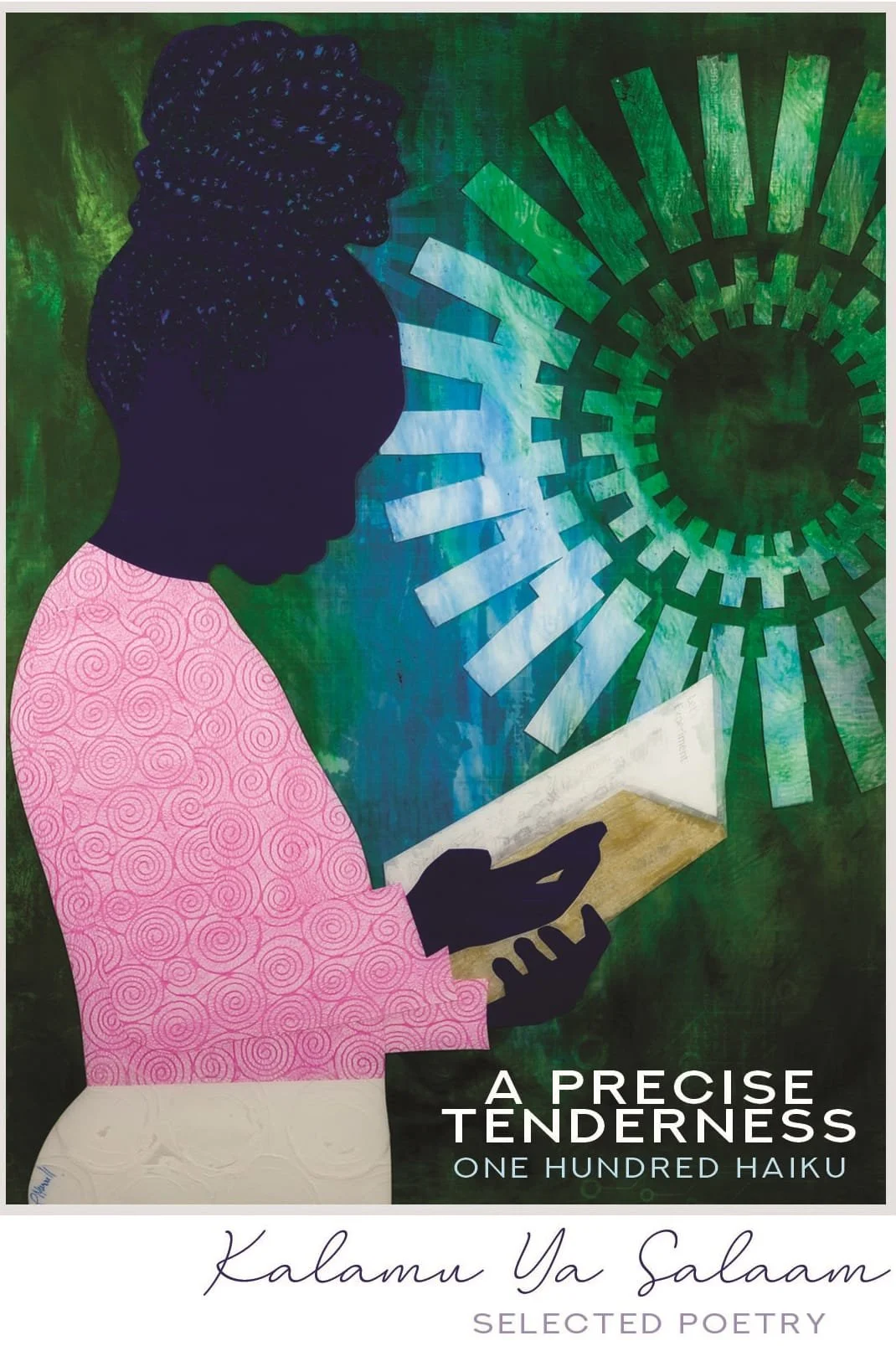A Kind of Intimacy: On A Precise Tenderness
by TINA ZAFREEN ALAM
in Spring 2023
baaba, Selah, 2023
I was moved by Kalamu ya Salaam’s A Precise Tenderness: One Hundred Haiku (Third World Press, 2023) as a title before I even read the first haiku. Seeing precision and tenderness next to one another sparks a productive tension for me akin to the excitement I feel when stepping into the unknown. The unknown is exciting for me because it’s the place where all possibilities lie. On first reading the title, I found myself wondering how precision might create the possibility for a greater tenderness, and how haiku might assist with that. The first haiku illuminates one way this could happen. It’s always gratifying to find the title of a book or an album in context within the larger body of work. Here, it’s no different and Salaam doesn’t make the reader wait long. The haiku that starts the dedication reads:
touch with a precise
tenderness & know all we
are is each other
The way the line breaks at “a precise/tenderness” further highlights the productive tension for me. In these three lines Salaam gestures to both the smallest touch and a much larger perspective that realizes “all we/are is each other.”
Precision and tenderness have at least two things in common, they both require care and intention. They also differ. While precision denotes a narrowing or refinement with the goal of accuracy, tenderness speaks to a softening, broadening or opening due to affection or sensitivity. A Precise Tenderness encompasses all these qualities and more.
Precision of language is a focus for me, both as a poet and in my use of the written and spoken word otherwise. With the restrictions of form, precision becomes even more important as poets are limited in how they can say what they want to say which can also result in finding new ways of saying those things. In the case of Salaam, the haiku form deploys restriction down to the syllabic level.
Haiku is traditionally a Japanese form. The English-language version is comprised of 17 syllables across 3 lines, broken down as 5 syllables, 7 syllables, and 5 syllables. It also generally focuses on nature imagery. In the Introduction and “On Writing Haiku,” Salaam claims Richard Wright and Sonia Sanchez as his influences and says of Sanchez, “She told about writing haiku when she couldn’t write anything else because of time or other constraints. [She] pointed out that writing haiku helped hone her poetic skills, especially in choosing words and streamlining her writing, moreover, haiku were short, pithy, very specific, and once you finished one, you had a feeling of accomplishment.” Salaam also highlights that he isn’t replicating the Japanese way and is instead engaging in a Black aesthetic practice employing the haiku form while adding in rhythm, rhyme, sound, irony, alliteration, and aphorisms.
While, as Sanchez told Salaam, writing haiku might be a poetic practice in brevity that brings a sense of completion, I believe that reading haiku can be the same. These one hundred haiku function like snapshots for me, suspending specific emotional moments in time, be they more personal, collective, or political. I am particularly drawn to the series of haiku about New Orleans as published by Essence magazine in April 1995 for how richly they evoke place, including this one:
French Quarter Intimacies
through weathered wood dark
on shadowed streets ancient voices
whisper history
This haiku is an example of Salaam’s stated intention to use alliteration. It also gives a sense of the material and immaterial presences in the French Quarter in speaking to the architecture and the whispering ancient voices, respectively. A place is so much more than its geography or its buildings, it is also its people, both living and dead. In other haiku, Salaam writes of more sensual intimacies. These snapshots make me, as a reader, almost feel like a voyeur to private moments. There is a vulnerability in sharing this nakedness, both in the poem and as a poem. This is alluded to in an earlier haiku:
haiku #23
i stand at your door
a poem in my hands, i could
not be more naked
The speaker is baring himself here, both to the person at whose door he is standing and to the reader. I feel honoured to witness this baring.
This too is a kind of intimacy.
The precision and tenderness of Salaam’s pen beckons me closer and dares me not to look away and not to stop listening. I specify listening because sound and sonic quality runs through these haiku in their rhyme, rhythm, alliteration, and more. It is this sound, along with the aphorisms that ground these haiku in Black aesthetic traditions. I will end here where Salaam ends, when he writes:
So how do I write
Haiku? As Blackly as I
Possibly can. Yeah!
TINA ZAFREEN ALAM is a diasporic Bangladeshi poet who doesn’t believe in space, time, or borders. Currently based in Toronto, she loves J Dilla, Wong Kar-Wai, and the Toronto Raptors. When she is not writing, she is watching basketball, listening to music, dancing, or communing with the city's squirrels.


